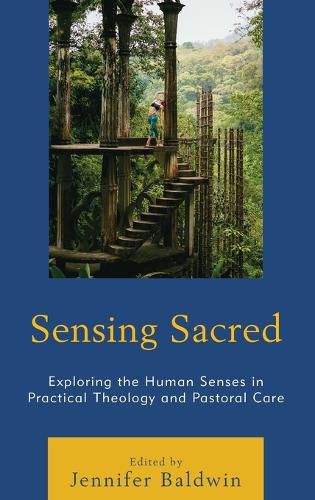Readings Newsletter
Become a Readings Member to make your shopping experience even easier.
Sign in or sign up for free!
You’re not far away from qualifying for FREE standard shipping within Australia
You’ve qualified for FREE standard shipping within Australia
The cart is loading…






This title is printed to order. This book may have been self-published. If so, we cannot guarantee the quality of the content. In the main most books will have gone through the editing process however some may not. We therefore suggest that you be aware of this before ordering this book. If in doubt check either the author or publisher’s details as we are unable to accept any returns unless they are faulty. Please contact us if you have any questions.
Sensing Sacred is an edited volume that explores the critical intersection of religion and body through the religious lens of practical theology, with an emphasis on sensation as the embodied means in which human beings know themselves, others, and the divine in the world. The manuscript argues that all human interaction and practice, including religious praxis, engages body through at least one of the human senses (touch, smell, hearing, taste, sight, kinestics/proprioception). Unfortunately, body-and, more specifically and ironically, sensation-is eclipsed in contemporary academic scholarship that is inherently bent toward the realm of theory and ideas. This is unfortunate because it neglects bodies, physical or communal, as the repository and generator of culturally conditioned ideas and theory. It is ironic because all knowledge transmission minimally requires several senses including sight, touch, and hearing. Sensing Sacred is organized into two parts. The first section devotes a chapter to each human sense as an avenue of accessing religious experience; while the second section explores religious practices as they specifically focus on one or more senses. The overarching aim of the volume is to explicitly highlight each sense and utilize the theoretical lenses of practical theology to bring to vivid life the connections between essential sensation and religious thinking and practice.
$9.00 standard shipping within Australia
FREE standard shipping within Australia for orders over $100.00
Express & International shipping calculated at checkout
This title is printed to order. This book may have been self-published. If so, we cannot guarantee the quality of the content. In the main most books will have gone through the editing process however some may not. We therefore suggest that you be aware of this before ordering this book. If in doubt check either the author or publisher’s details as we are unable to accept any returns unless they are faulty. Please contact us if you have any questions.
Sensing Sacred is an edited volume that explores the critical intersection of religion and body through the religious lens of practical theology, with an emphasis on sensation as the embodied means in which human beings know themselves, others, and the divine in the world. The manuscript argues that all human interaction and practice, including religious praxis, engages body through at least one of the human senses (touch, smell, hearing, taste, sight, kinestics/proprioception). Unfortunately, body-and, more specifically and ironically, sensation-is eclipsed in contemporary academic scholarship that is inherently bent toward the realm of theory and ideas. This is unfortunate because it neglects bodies, physical or communal, as the repository and generator of culturally conditioned ideas and theory. It is ironic because all knowledge transmission minimally requires several senses including sight, touch, and hearing. Sensing Sacred is organized into two parts. The first section devotes a chapter to each human sense as an avenue of accessing religious experience; while the second section explores religious practices as they specifically focus on one or more senses. The overarching aim of the volume is to explicitly highlight each sense and utilize the theoretical lenses of practical theology to bring to vivid life the connections between essential sensation and religious thinking and practice.